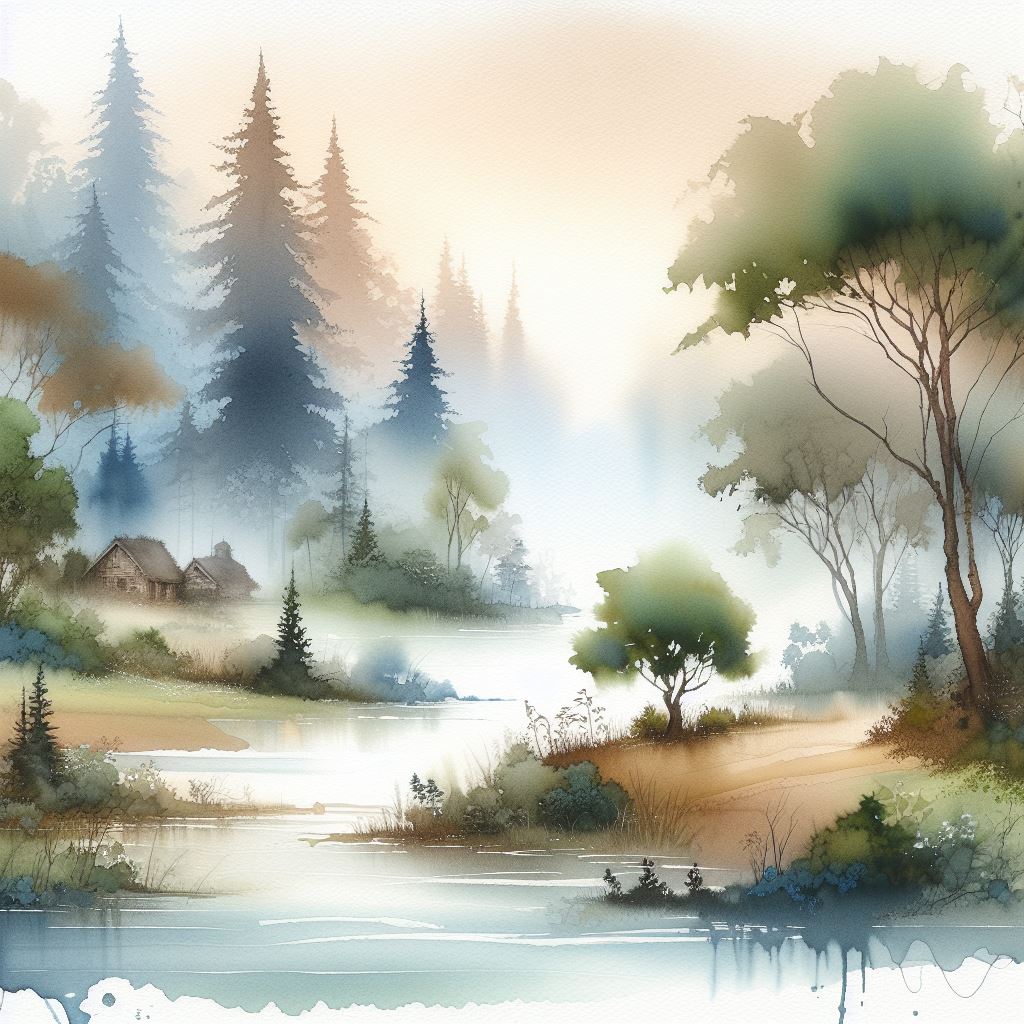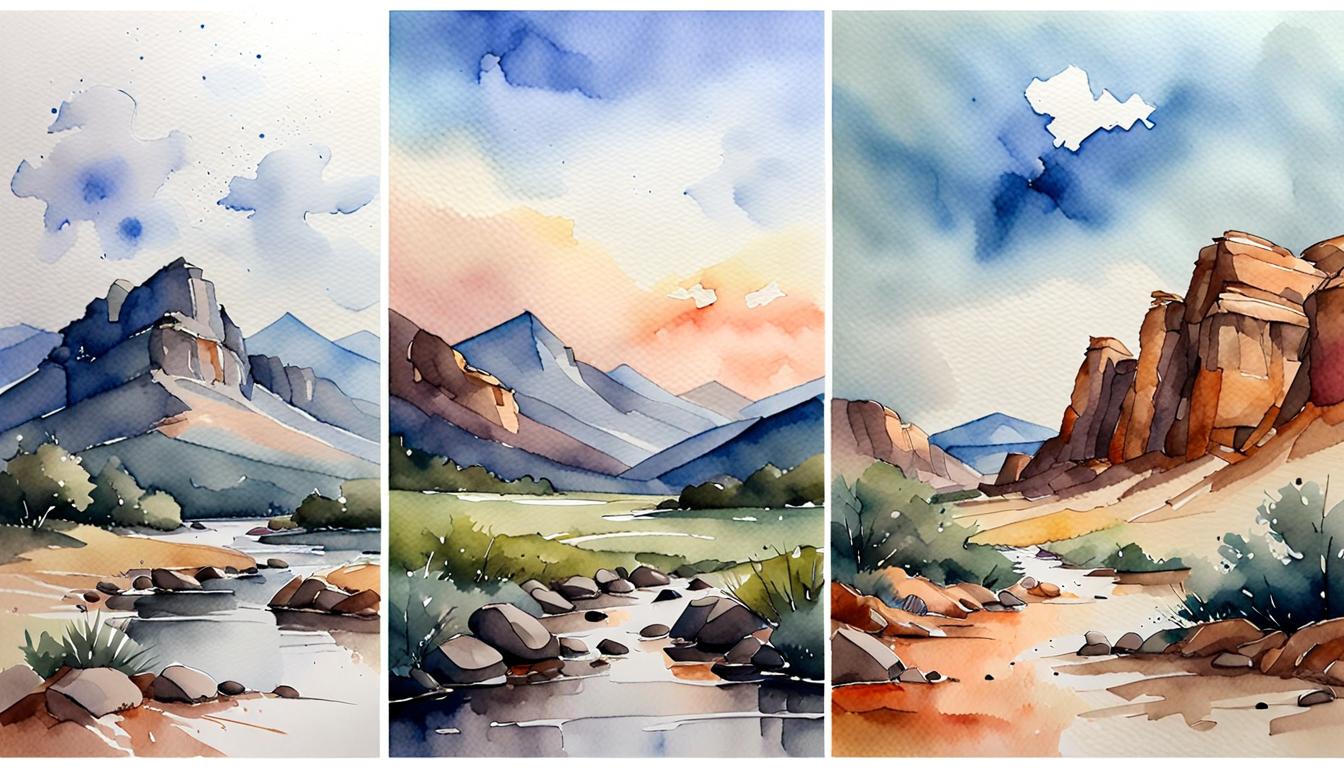
Have you ever struggled to capture the glow of warm sunlight on skin? Or the subtle blush of a cheek? Watercolor skin tones are both rewarding and challenging, but don’t worry! This guide will unlock the techniques, color mixing, and practice tips to help your watercolor portraits truly shine.
In this comprehensive guide, we will cover everything you need to know about painting watercolor skin tones, from the materials you need to the techniques you can use. We will also provide practice exercises and tips to help you improve your skills.
Materials
Paints
The first step to painting watercolor skin tones is to choose the right paints. You will need a range of flesh tones, from light to dark. You can also add a touch of red or yellow to your flesh tones to create warmer or cooler skin tones.
Brushes
You will need a variety of brushes for painting watercolor skin tones. A small, round brush is good for detail work, while a larger, flat brush is good for laying down washes of color.
Paper
The type of paper you use will also affect the way your watercolor skin tones look. A smooth, cold-pressed paper will give you a more even finish, while a rough, hot-pressed paper will give you a more textured finish.
Skin Tone Techniques
There are several different techniques you can use to paint watercolor skin tones. Some of the most common techniques include:
Layering
Layering is a technique where you apply multiple layers of paint to build up the color and create depth. When layering, it is important to let each layer dry completely before applying the next. More on Layering
Glazing
Glazing is a technique where you apply thin, transparent layers of paint over each other. This can create a very smooth, even finish. More on Glazing
Wet-on-wet
Wet-on-wet is a technique where you apply paint to wet paper. This can create a soft, blended look. More on Wet-on-Wer
Dry brush
Dry brush is a technique where you apply paint to dry paper with a dry brush. This can create a textured, aged look. More on Dry Brush Technique
Color Theory
Understanding color theory is essential for painting realistic watercolor skin tones. Skin tones are made up of a variety of different colors, including red, yellow, blue, and white. The proportions of these colors will vary depending on the skin tone you are trying to achieve.
How to Mix Watercolor Skin Tones
Mixing watercolor skin tones can be a challenge, as there are many different factors to consider, such as the lighting conditions, the skin tone of the subject, and the desired effect. However, by following a few simple steps, you can create realistic and beautiful skin tones.

1. Start with a base color.
The first step is to choose a base color for your skin tone. This color will be the foundation for your skin tone, so it is important to choose a color that is close to the skin tone of your subject. You can use a single color or a mixture of colors to create your base color.
2. Add warm and cool colors.
Once you have your base color, you can start to add warm and cool colors to create depth and dimension. Warm colors, such as red and yellow, can be used to create highlights and shadows, while cool colors, such as blue and green, can be used to create shadows and undertones.
3. Adjust the value.
The value of a color refers to its lightness or darkness. You can adjust the value of your skin tone by adding white or black paint. Adding white will lighten the skin tone, while adding black will darken it.
4. Experiment.
The best way to learn how to mix watercolor skin tones is to experiment. Try mixing different colors and values to see what works best for you. Don’t be afraid to make mistakes, as watercolor is a forgiving medium.
Here are a few tips for mixing watercolor skin tones:
- Use a color wheel to help you choose colors that will work well together.
- Start with a small amount of paint and gradually add more until you get the desired color.
- Let each layer of paint dry completely before applying the next. This will help to prevent your skin tones from becoming muddy or streaky.
- Use a variety of brushstrokes to create different effects. For example, you can use a small, round brush for detail work and a larger, flat brush for laying down washes of color.
With practice, you will be able to mix beautiful and realistic watercolor skin tones.
Practice Exercises
The best way to improve your watercolor skin tone painting skills is to practice. Here are a few practice exercises to get you started:
Painting simple skin tones
Start by painting simple skin tones, such as a single cheek or a hand. This will help you get a feel for the different techniques and how to mix colors.
Painting complex skin tones
Once you have mastered painting simple skin tones, you can move on to painting more complex skin tones, such as a face or a full figure. This will challenge you to use a wider range of colors and techniques.
Painting skin tones in different lighting conditions
Skin tones can look very different depending on the lighting conditions. Practice painting skin tones in different lighting conditions, such as sunlight, indoor light, and candlelight.
Tips and Tricks
Here are a few tips and tricks to help you paint better watercolor skin tones:
- Avoid using too much water. Watercolor is a transparent medium, so it is important to use just enough water to get the paint flowing. Too much water can make your skin tones look muddy or uneven.
- Let each layer dry completely before applying the next. This will help to prevent your skin tones from becoming muddy or streaky.
- Use a variety of brushstrokes. Different brushstrokes can create different effects. Experiment with different brushstrokes to see what works best for you.
- Don’t be afraid to make mistakes. Watercolor is a forgiving medium, so don’t be afraid to experiment and make mistakes. The more you practice, the better you will become.

Conclusion
Watercolor skin tones are a beautiful and challenging subject to paint. By following the tips and techniques in this guide, you can improve your skills and create realistic, expressive skin tones.


